
The Toshiba EMI Recordings / U.S. Edition Series
#20 Hey Jude (AP-8940)
(Update: 15th. June 2020)

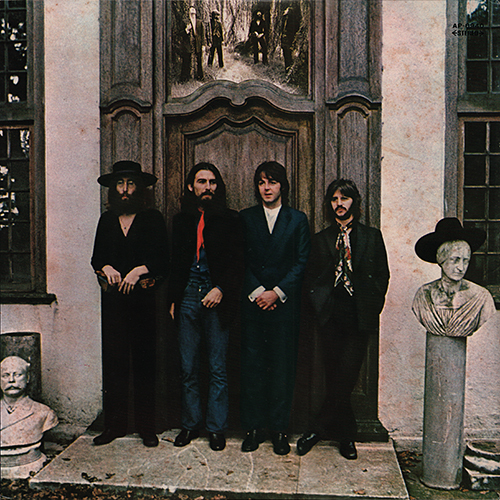 Apple 1st. Sleeve |
|
| TITLE | HEY JUDE |
||||
| CATALOG NUMBER | AP-8940 |
||||
| RELEASE DATE |
25th. April 1970 / First Press |
||||
| TRACK LISTING | SIDE 1 | SIDE 2 | |||
| Can't Buy Me Love |
Hey Jude |
||||
| I Should Have Known Better |
Old Brown Shoe |
||||
| Paperback Writer |
Don't Let Me Down | ||||
| Rain |
Ballad Of John And Yoko | ||||
| Lady Madonna |
|||||
| Revolution | |||||
| FRONT --> Click! | BACK --> Click! | SIDE 1 --> Click! | SIDE 2 --> Click! | DISK | |
 |
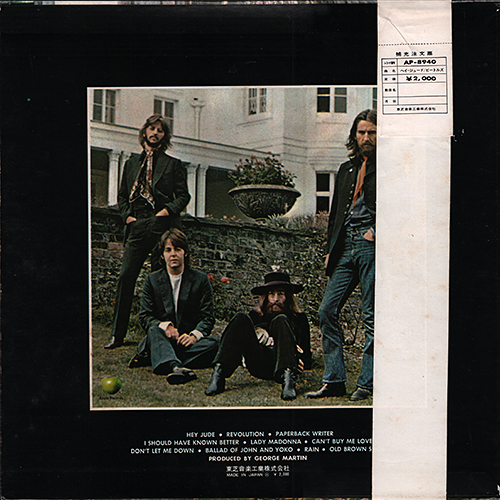 |
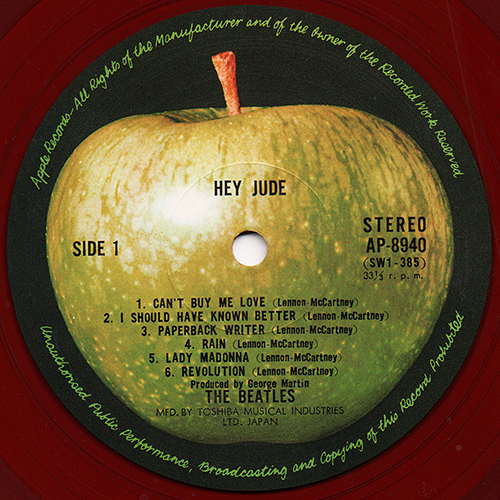 |
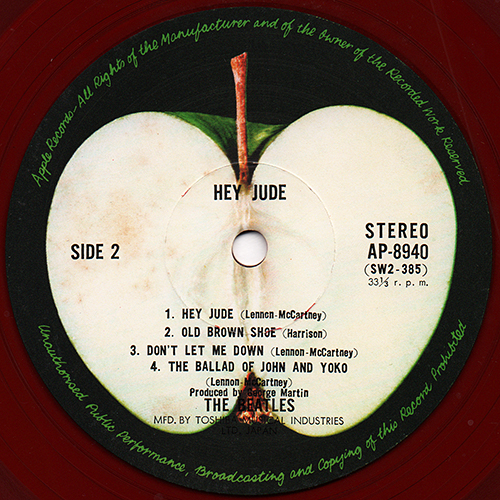 |
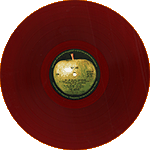 |
|
| INNER SLEEVE |
LYRIC
SHEET (Slip Sheet Type) |
||||
| FRONT --> Click! | BACK --> Click! | FRONT --> Click! | BACK --> Click! | With
Apple
custom black inner sleeve. The lyric sheet is slip sheet type. |
|
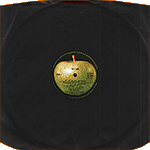 |
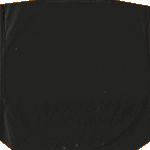 |
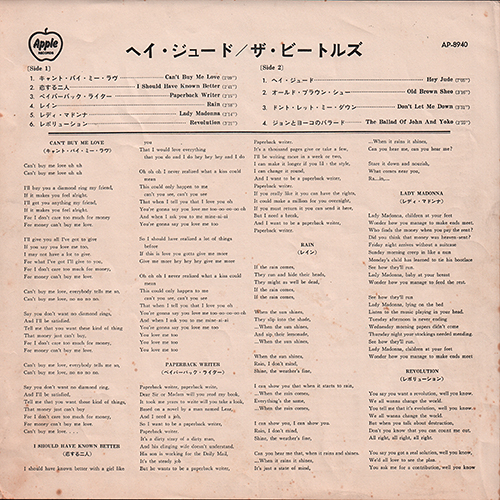 |
 |
||
| LYRIC
SHEET CLOSE UP |
|||||
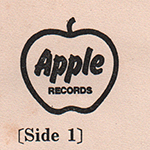 |
Apple logomark was printed at the upper left corner of the lyric sheet. |  |
 |
||
| Catalog number and the company name "Toshiba Musical Industries Ltd." were printed onthe lyric sheet. | |||||
| LYRIC SHEET CLOSE UP | |||||
 |
On the lyric sheet, the song title of the 2nd. song on side-2 was misprinted "Old Brown Sheo" instead of "Old Brown Shoe". | ||||
| Apple Gourd in White OBI CLOSE UP | |||||
| OBI: FRONT --> Click! | OBI: BACK --> Click! | ||||
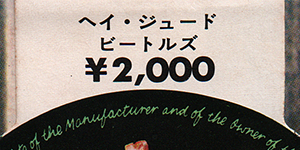 |
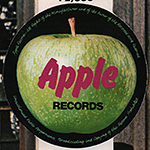 |
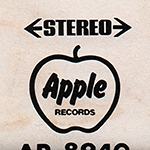 |
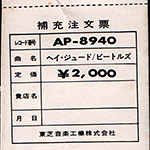 |
||
| Issued with a narrow Obi with a large round Apple logo at the top, has a white background. The word "STEREO" and Apple logo mark and catalog number "AP-8940" were printed on the front. 1st. pressing had a priced ¥2,000 on the obi strip. | Has a order sheet on the back side of the Obi. Catalog No, price "¥2,000" and "Toshiba Musical Industries Ltd."were printed at the order sheet. | ||||
|
FRONT
AND BACK COVER CLOSE UP
|
|||||
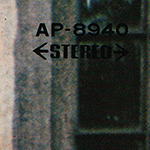 |
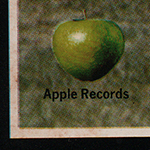 |
 |
|||
| The Apple logomark was printed on
the left bottom of the back cover. "Toshiba Musical Industries Ltd." and "H-¥2,000" was printed at the bottomof the back cover. |
|||||
| LABEL CLOSE UP | |||||
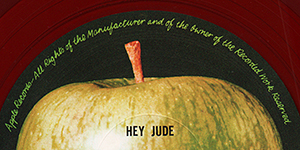 |
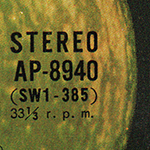 |
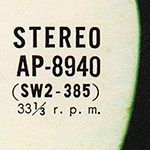 |
The phrase "Apple Records - All Rights of the Manufacturer and of the Owner of the Recorded work Reserved." was printed at the perimeter. | ||
| LABEL CLOSE UP | |||||
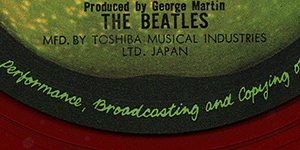 |
 |
The words "MFD. BY TOSHIBA MUSICAL INDUSTRIES LTD. JAPAN" was printed at the bottom of the label. | |||
|
OTHER ITEM
|
|||||
| - | |||||
| RECORD LABEL | Dark Green Apple label Type-1 |
||||
| MIX | STEREO |
||||
| MATRIX No. | SIDE 1 | SW1-385
1S 1 27 |
|||
| SIDE 2 | SW2-385
1S2 24 |
||||
| PRESS MARK | 1H |
||||
| VINYL COLOR | RED |
||||
| RECORD COMPANY'S NAME | SLEEVE | Toshiba
Ongaku kogyo Kabusikigaisha |
|||
| LABEL | MFD. BY
TOSHIBA MUSICAL INDUSTRIES LTD. JAPAN |
||||
| SYMBOL/PRICE | H - ¥2,000 |
||||
| LYRIC SHEET STYLE | Slip Sheet Type |
||||
| COVER FORM | Single type. Hard cover. |
||||
| INNER SLEEVE |
Apple custom black sleeve |
||||
| OBI |
"Gourd" in white Obi (a narrow Obi with a
large round Apple logo at the top) / with Order sheet |
||||
| COVER DESIGN/ PHOTO/ NOTES | Photo: Ethan Russell and Monte Fresco | ||||
|
COMMENTS
|
Dark green Apple label
Type-1with black print. The front and back sleeve is similar to its U.S. counterpart. The album includes most of The Beatles' later singles released in 1968 and 1969 together with both sides of the 1966 single "Paperback Writer". Two rather odd and out of sequence inclusions are "Can’t Buy Me Love" and "I Should Have Know Better" both from the "A Hard Day’s Night" album that were included in place of "The Inner Light" and "Get Back" even though their respective A and B sides, "Lady Madonna" and "Don’t Let Me Down", are included. The Beatles united for a final photographic session on 22 August 1969. It was also the last occasion in which all four members were together for band duties; thereafter their only meetings were business-related. The shoot took place in the house and grounds of Tittenhurst Park, John Lennon and Yoko Ono's home in Sunninghill near Ascot, Berkshire. The couple had moved in earlier in the month, although they had bought the 72-acre estate in May 1969. The photo shoot took place two days after their final recording session together. The photographers were Ethan Russell and Monte Fresco, with additional pictures taken by The Beatles' assistant Mal Evans. In Novemver 1968, that was the date when Apple Corp Ltd. of England and Toshiba came to an agreement on the manufacturing and distribution of the Beatles' records in Japan. As part of that agreement, Toshiba had to reissue on the Apple label all the records previously issued on the Odeon label. The sleeves also had to be altered to desplay the Apple logo. Futher still, all the Odeon catalog number prefixes were changed to ones with Apple prefixes. In most cases, only the prefixes were changed and the catalog numbers were left intanct. Odeon singles, EPs, and LPs with the OR or OP prefixes were changed to Apple singles, EPs, and LPs with the AR or AP prefixes, respectively. But Toshiba did not instantly implement all these changes and did not immediately withdraw all Odeon label records. In fact, the phasing out of the Odeon label products and the phasing in of the Apple label was a lengthy process taking several months at least. The very first record in Japan issued under the Toshiba/Apple contract and bearing the Apple label was "The Beatles double LP (the White Album)", released on 21th. January 1969. And unlike elsewhere in the world, the first single in Japan to bear the Apple label was not "Hey Jude / Revolution" but rather "Ob- La-Di, Ob-La-Da / While My Guitar Gently Weeps", released on 10th. March, 1969. Red vinyl: Besides good sound and quality printing, Japanese records also offered some other things of interest to the collector. One of the primary manufacturing companies in Japan, Toshiba, pressed a lot of their records on red, “Everclean” vinyl from 1958 through 1974 (maybe). While not pressed as collectors’ items, these red vinyl pressings are more sought out by collectors than their black vinyl counterparts. The Everclean vinyl was designed to be less prone to collecting static electricity and dust than the more common black vinyl. The obi: Apple "Gourd" in white Obi 1st. pressing issued with a narrow Obi with a large round Apple logo at the top, has a white background. The word "STEREO" and Apple logo mark and catalog number "AP-8940" were printed on the front. 1st. pressing had a priced ¥2,000 on rear sleeve and obi strip. While most Japanese records feature local music, a lot of music fans there like foreign music, as well. The language barrier in Japan presented a problem – should foreign album covers be changed for Japanese albums? The solution was the obi, which means “belt” or “sash”. The obi is a strip of paper, usually about two inches wide, that wraps vertically around the album cover, containing information about the artist and album in Japanese. As these strips of paper were fragile and easily torn, they are often missing, especially since consumers in the 1950s and 1960s attached little significance to them. Finding Japanese records made prior to 1970 that still have the obi intact can be quite difficult, and for some albums, nearly impossible. The inclusion of the obi can dramatically affect the price of some Japanese records, sometimes increasing the price by a factor of ten. |
||||
| TITLE | HEY JUDE |
||||
| CATALOG NUMBER | AP-8940 |
||||
| RELEASE DATE | 25th. April 1970 / First Press |
||||
| TRACK LISTING | SIDE 1 | SIDE 2 | |||
| Can't Buy Me Love |
Hey Jude |
||||
| I Should Have Known Better |
Old Brown Shoe |
||||
| Paperback Writer |
Don't Let Me Down | ||||
| Rain |
Ballad Of John And Yoko | ||||
| Lady Madonna |
|||||
| Revolution | |||||
| FRONT --> Click! | BACK --> Click! | SIDE 1 --> Click! | SIDE 2 --> Click! | DISK | |
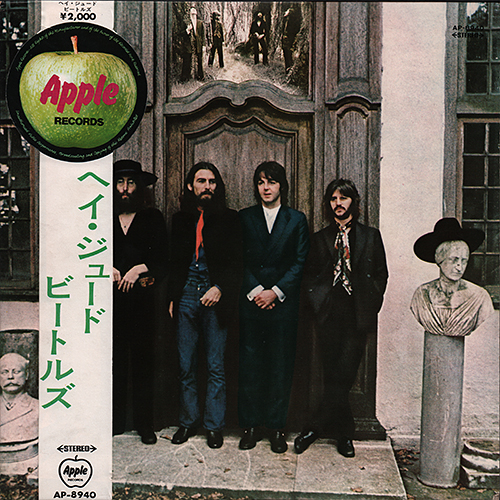 |
 |
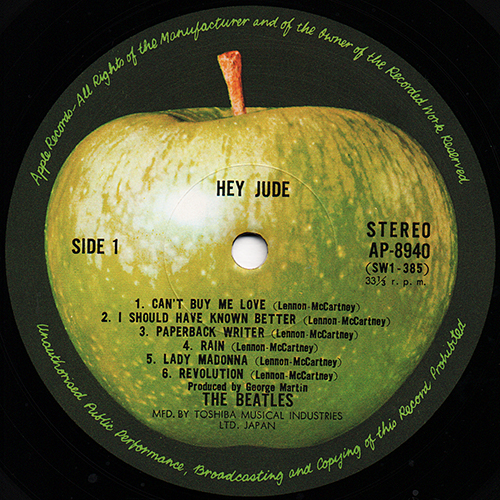 |
 |
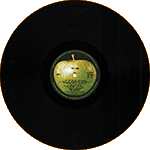 |
|
| INNER SLEEVE |
LYRIC
SHEET (Slip Sheet Type) |
||||
| FRONT --> Click! | BACK --> Click! | FRONT --> Click! | BACK --> Click! | With
Apple
custom black inner sleeve. The lyric sheet is slip sheet type. |
|
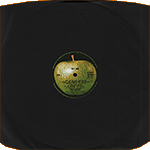 |
 |
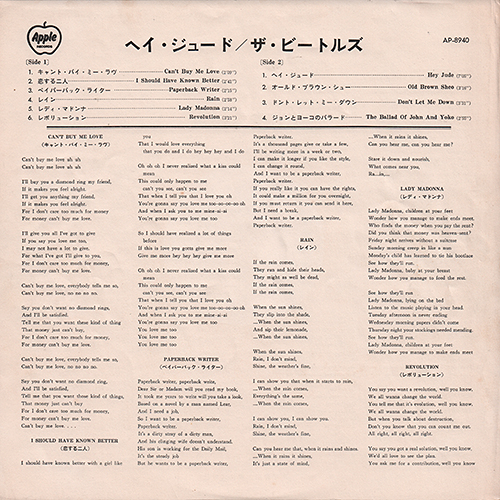 |
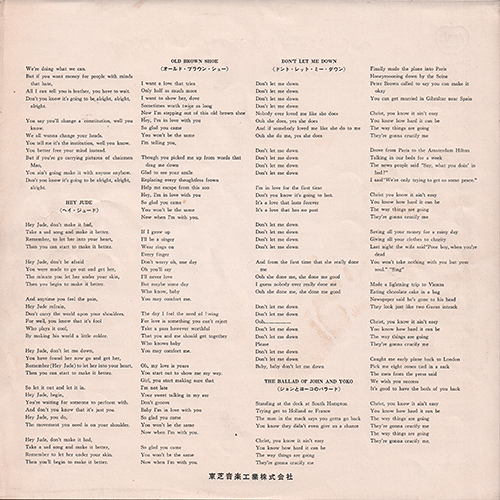 |
||
| LYRIC
SHEET CLOSE UP |
|||||
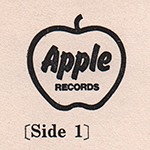 |
Apple logomark was printed at the upper left corner of the lyric sheet. |  |
 |
||
| Catalog number and the company name "Toshiba Musical Industries Ltd." were printed onthe lyric sheet. | |||||
| LYRIC SHEET CLOSE UP | |||||
 |
On the lyric sheet, the song title of the 2nd. song on side-2 was misprinted "Old Brown Sheo" instead of "Old Brown Shoe". | ||||
| Apple Gourd in White OBI CLOSE UP | |||||
| OBI: FRONT --> Click! | OBI: BACK --> Click! | ||||
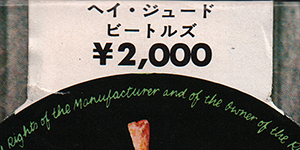 |
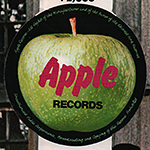 |
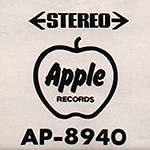 |
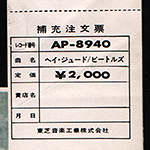 |
||
| Issued with a narrow Obi with a large round Apple logo at the top, has a white background. The word "STEREO" and Apple logo mark and catalog number "AP-8940" were printed on the front. 1st. pressing had a priced ¥2,000 on the obi strip. | The obi remains intactwith the order form on the back uncut. | ||||
|
FRONT
AND BACK COVER CLOSE UP
|
|||||
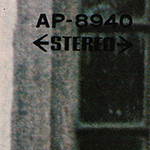 |
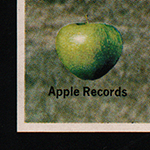 |
 |
|||
| The Apple logomark was printed on
the left bottom of the back cover. "Toshiba Musical Industries Ltd." and "H-¥2,000" was printed at the bottomof the back cover. |
|||||
| LABEL CLOSE UP | |||||
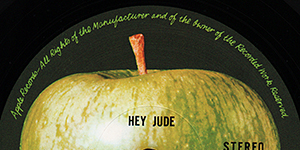 |
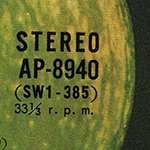 |
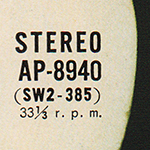 |
The phrase "Apple Records - All Rights of the Manufacturer and of the Owner of the Recorded work Reserved." was printed at the perimeter. | ||
| LABEL CLOSE UP | |||||
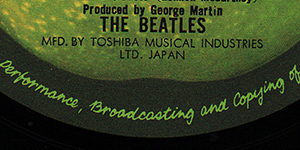 |
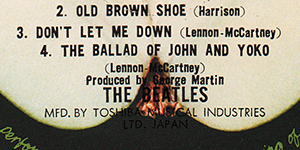 |
The words "MFD. BY TOSHIBA MUSICAL INDUSTRIES LTD. JAPAN" was printed at the bottom of the label. | |||
|
OTHER ITEM
|
|||||
| - | |||||
| RECORD LABEL | Dark Green Apple label Type-1 |
||||
| MIX | STEREO |
||||
| MATRIX No. | SIDE 1 | SW1-385 1S
16 |
|||
| SIDE 2 | SW2-385
1S 7 |
||||
| PRESS MARK | C 0 |
||||
| VINYL COLOR | BLACK |
||||
| RECORD COMPANY'S NAME | SLEEVE | Toshiba
Ongaku kogyo Kabusikigaisha |
|||
| LABEL | MFD. BY
TOSHIBA MUSICAL INDUSTRIES LTD. JAPAN |
||||
| SYMBOL/PRICE | H - ¥2,000 |
||||
| LYRIC SHEET STYLE | Slip Sheet Type |
||||
| COVER FORM | Single type. Hard cover. |
||||
| INNER SLEEVE |
Apple custom black sleeve |
||||
| OBI |
"Gourd" in white Obi (a narrow Obi with a
large round Apple logo at the top) / with Order sheet |
||||
| COVER DESIGN/ PHOTO/ NOTES | Photo: Ethan Russell and Monte Fresco | ||||
|
COMMENTS
|
Dark green Apple label
Type-1with black print. The front and back sleeve is similar to its U.S. counterpart. The album includes most of The Beatles' later singles released in 1968 and 1969 together with both sides of the 1966 single "Paperback Writer". Two rather odd and out of sequence inclusions are "Can’t Buy Me Love" and "I Should Have Know Better" both from the "A Hard Day’s Night" album that were included in place of "The Inner Light" and "Get Back" even though their respective A and B sides, "Lady Madonna" and "Don’t Let Me Down", are included. The Beatles united for a final photographic session on 22 August 1969. It was also the last occasion in which all four members were together for band duties; thereafter their only meetings were business-related. The shoot took place in the house and grounds of Tittenhurst Park, John Lennon and Yoko Ono's home in Sunninghill near Ascot, Berkshire. The couple had moved in earlier in the month, although they had bought the 72-acre estate in May 1969. The photo shoot took place two days after their final recording session together. The photographers were Ethan Russell and Monte Fresco, with additional pictures taken by The Beatles' assistant Mal Evans. In Novemver 1968, that was the date when Apple Corp Ltd. of England and Toshiba came to an agreement on the manufacturing and distribution of the Beatles' records in Japan. As part of that agreement, Toshiba had to reissue on the Apple label all the records previously issued on the Odeon label. The sleeves also had to be altered to desplay the Apple logo. Futher still, all the Odeon catalog number prefixes were changed to ones with Apple prefixes. In most cases, only the prefixes were changed and the catalog numbers were left intanct. Odeon singles, EPs, and LPs with the OR or OP prefixes were changed to Apple singles, EPs, and LPs with the AR or AP prefixes, respectively. But Toshiba did not instantly implement all these changes and did not immediately withdraw all Odeon label records. In fact, the phasing out of the Odeon label products and the phasing in of the Apple label was a lengthy process taking several months at least. The very first record in Japan issued under the Toshiba/Apple contract and bearing the Apple label was "The Beatles double LP (the White Album)", released on 21th. January 1969. And unlike elsewhere in the world, the first single in Japan to bear the Apple label was not "Hey Jude / Revolution" but rather "Ob- La-Di, Ob-La-Da / While My Guitar Gently Weeps", released on 10th. March, 1969. Black vinyl: Besides good sound and quality printing, Japanese records also offered some other things of interest to the collector. One of the primary manufacturing companies in Japan, Toshiba, pressed a lot of their records on red, “Everclean” vinyl from 1958 through 1974 (maybe). While not pressed as collectors’ items, these red vinyl pressings are more sought out by collectors than their black vinyl counterparts. The Everclean vinyl was designed to be less prone to collecting static electricity and dust than the more common black vinyl. The obi: Apple "Gourd" in white Obi 1st. pressing issued with a narrow Obi with a large round Apple logo at the top, has a white background. The word "STEREO" and Apple logo mark and catalog number "AP-8940" were printed on the front. 1st. pressing had a priced ¥2,000 on rear sleeve and obi strip. While most Japanese records feature local music, a lot of music fans there like foreign music, as well. The language barrier in Japan presented a problem – should foreign album covers be changed for Japanese albums? The solution was the obi, which means “belt” or “sash”. The obi is a strip of paper, usually about two inches wide, that wraps vertically around the album cover, containing information about the artist and album in Japanese. As these strips of paper were fragile and easily torn, they are often missing, especially since consumers in the 1950s and 1960s attached little significance to them. Finding Japanese records made prior to 1970 that still have the obi intact can be quite difficult, and for some albums, nearly impossible. The inclusion of the obi can dramatically affect the price of some Japanese records, sometimes increasing the price by a factor of ten. |
||||
